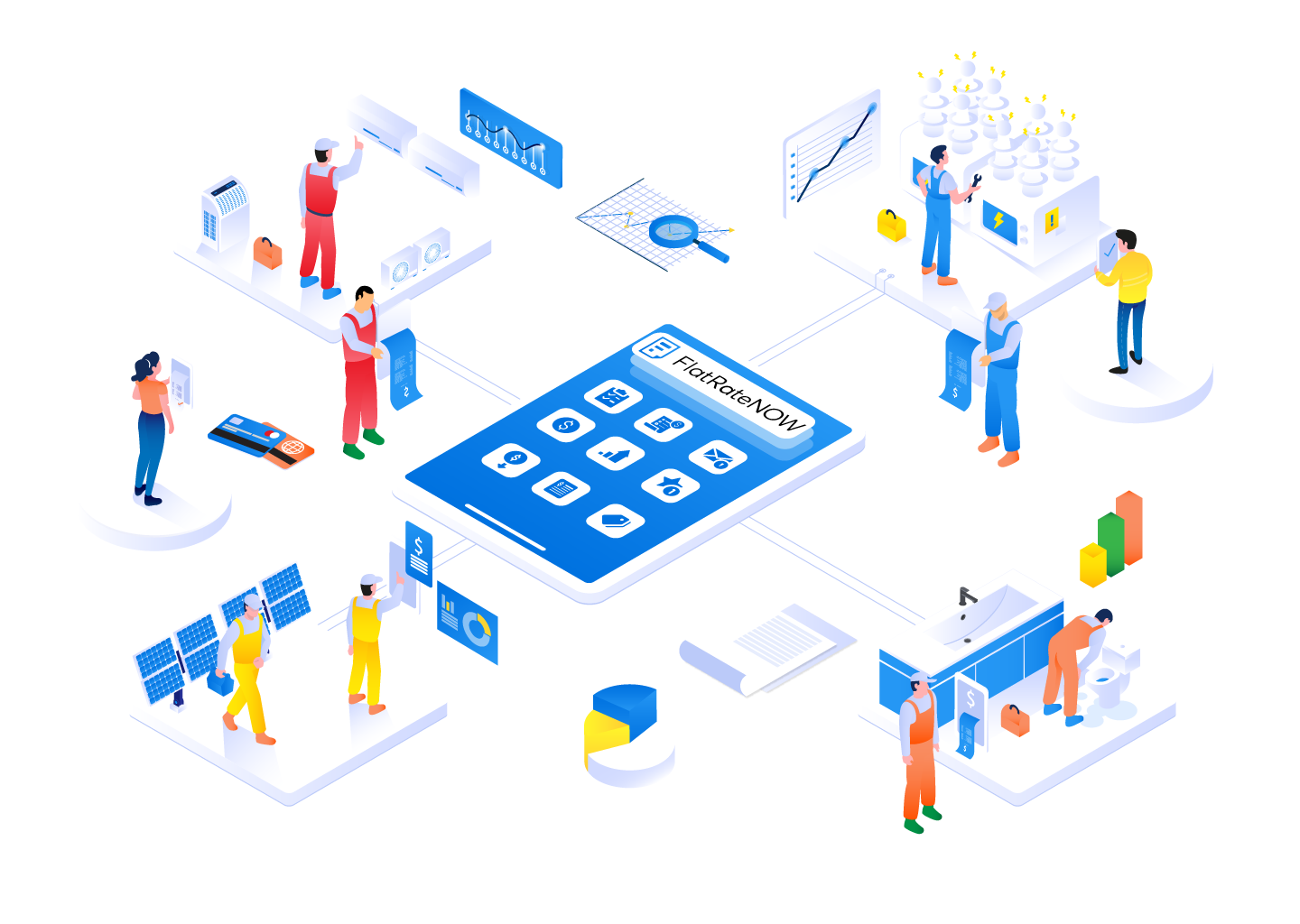When we ask our potential clients why they haven’t implemented FlatRateNOW following their free trial period - many told us they don’t have enough time to make the change. So what does it take to overcome barriers to change and innovation and, more importantly, what does it cost a business if they don’t make an improvement?
Embracing change in business
The old quote ‘why change something that isn’t broken’ rings along our phone line many times a day. But what would happen if we always indulged that way of thinking?
- Would we have electricity to power our lives?
- Would we have vehicles to help us transport people and items?
- Would we have fresh water easily accessible to every resident?
The cost of inaction
There’s a simple equation you can do that’ll help you decide whether change will result in an improvement that will benefit your business. It examines the difference between the old method and the improved method, and is called the ‘Cost of Inaction’. The actual cost doesn’t have to be money, it can be:
- Time
- Relationships
- Experiences
- Emotion
- Energy
Here’s a scenario:
Your employee is great at sales and wins 90% of the jobs he quotes. However, he’s always making mistakes, rushing through the job and leaving your customers in a foul mood.
On the surface, he’s bringing in dollars, but the cost of inaction (leaving him to his own method) could be:
- Greater churn rate (lower client retention)
- Greater marketing expenses (needing to find new clients all the time)
- Refunds (for mistakes)
- Less time to focus on business improvements because you’re handling upset customers
- Identifying the cost of inaction will help guide you through many business decisions.

The difference between the old method and the improved method is called ‘Cost of Inaction’. The actual cost doesn’t have to be money, it can be:
- Time
- Relationships
- Experiences
- Emotion
- Energy
Here’s a scenario:
- Your employee is great at sales and wins 90% of the jobs he quotes however he is always making mistakes, rushing through the job and leaving your customers in a foul mood.
On the surface, he’s bringing in dollars, but the cost of inaction (leaving him to his own method) could be:
- Greater churn rate (lower client retention)
- Greater marketing expenses (needing to find new clients all the time)
- Refunds (for mistakes)
- Less time to focus on business improvements because you’re handling upset customers
Identifying the cost of inaction will help guide you through many business decisions.
What can lead to inaction?
There could be many reasons people don't action an improvement when they can clearly see how much it will improve their process.
Breaking habits is difficult, especially if they make life more comfortable. They may have formed because a person is:
- Overthinking the steps required to action the change
- Happy with the status quo and unmotivated to make the change
- Nervous about taking the dive
Change is extremely difficult for people because it requires changing a habit. Habits are a part of life and can make your daily grind more bearable. But if those habits are losing you money, losing you time or impacting your health, steps need to be taken to break those habits.
If the thought of change gives you shivers, it may be because you put a large emphasis on the outcome, virtually creating a mountain out of a mole-hill in your mind which demotivates you, and so you tell yourself it’s all too hard.
How can your business embrace change and initiate opportunity?
At FlatRateNOW, we use the analogy of kicking the can. By knowing where you want to go, you start to take small steps towards the goal - similar to when you kick a can and walk up to it and kick it again.
For instance, if you currently quote after work, in the comfort of your house, but would like to get your evenings back, a small step forward could be writing the quotes after lunch and after work. That way you only have to complete half the quotes after hours.
The next step could be to begin quoting after every job, eliminating the need to write any quotes after hours.
Finally, you begin quoting while on-site with your customer.
Visualise the steps required
If you’re unable to visualise the steps required to implement change, it might be you're overthinking what needs to be done and are unable to decide on the first step. Essentially giving yourself choice overload and putting yourself into a 'rut'.
In this instance, the best way to move forward is to speak with someone other than your internal voice! There are a number of different people you can talk to depending on who you prefer:
- Meet with a mentor
- Chat with a friend
- Speak to a family member
By speaking to someone, you not only get their perspective on the steps, but you also hear yourself say each step. This allows your mind to think externally, rather than through your internal monologue which might be affected by unmotivated thoughts.

Small Changes lead to big improvements
"Rome wasn't built in a day" is a very famous quote that conveys everything takes time and plenty of little steps to get there. The sporting stars you see on TV or watch live didn't get to that status overnight. It happened over time with small, incremental changes to their process.
You too can enjoy big improvements through small changes.
The small change: you include a small $29 call out fee for all new customers to help recover the cost of lost jobs. Now your entire client base knows it will cost them $29 of their money for your time.
The big improvement: your customers now value your time far more than they use too.
The small change: instead of producing quotes in your vehicle, you instead create them while at your customer’s property. You notice a significant increase in your success rate and customer satisfaction.
The big improvement: your revenue has increased and so have the number of 5-star reviews.
The small change: you ensure your team are always wearing clean clothes and are cleanly shave to improve the image of your business. You start to see a lot more referral work coming in.
The big improvement: Your marketing cost is reducing, improving your business overheads.
The small change: in your weekly company catch-up, you no longer speak the entire time but give your employees a chance to raise questions, concerns or share what they’re hearing and seeing on their jobs. You’ve noticed your employees are much happier at work which is reducing the number of sick days and time off.
The big improvement: A great functioning team that is much more productive.
These all may seem daunting at the time but the impact it can have on a business could be 10-fold.
Putting off change that can have a high cost of inaction can impact you, your business and those that are employed by you. If you're ready to take the next step, try FlatRateNOW for free and see the difference it can make!


